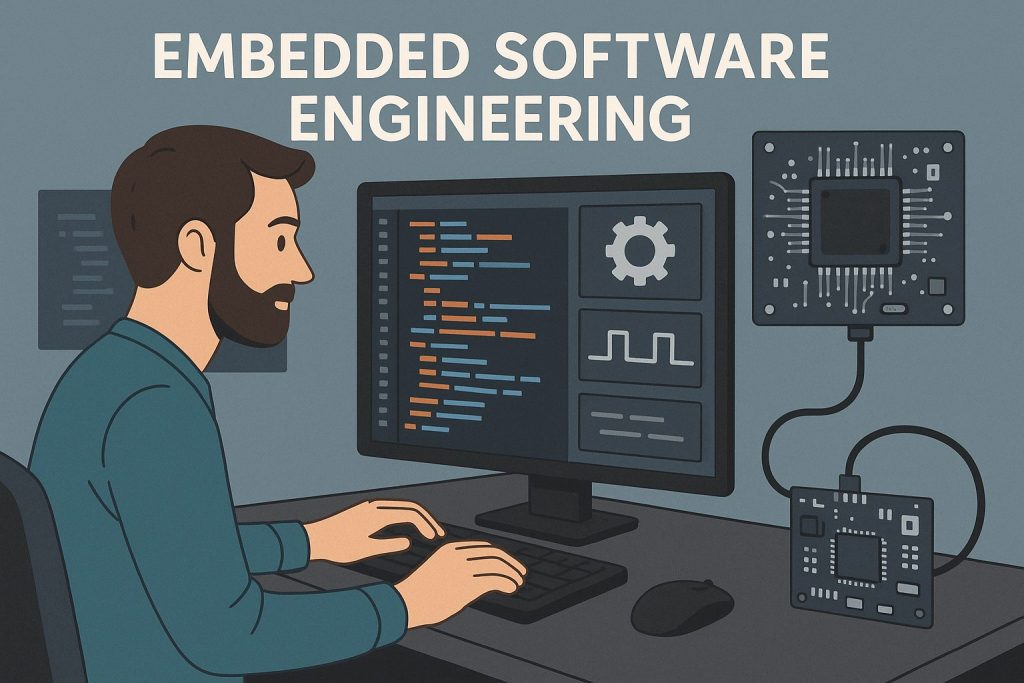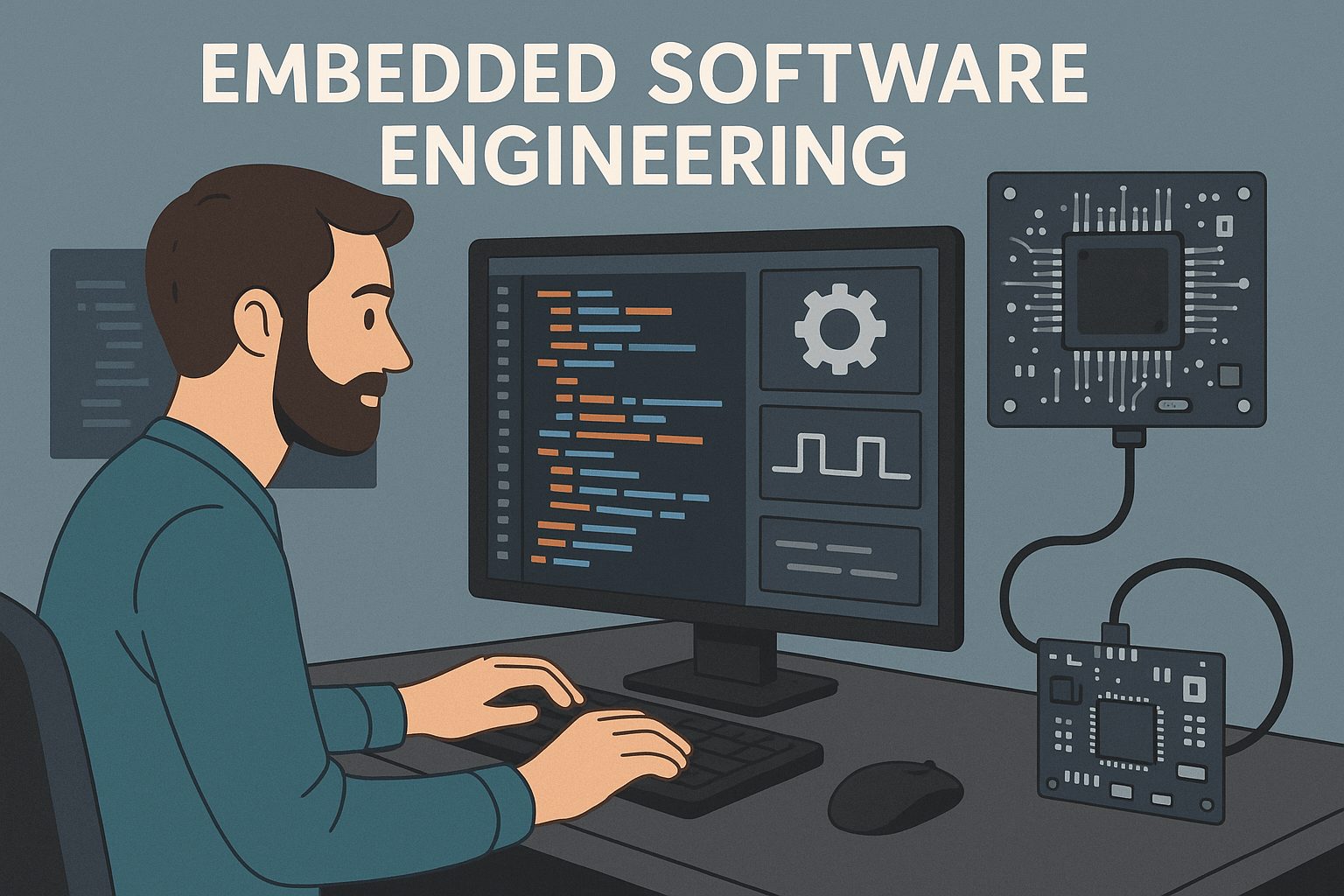
Embedded software engineering sits at the heart of nearly every modern device we interact with, from smartphones and smartwatches to automobiles and medical equipment. If you’ve ever wondered how these systems work seamlessly with hardware, the answer lies within embedded systems development. This field combines deep technical understanding of both hardware and software, making it an exciting career path and a core area of modern technology. In this guide, I’ll walk you through the basics of embedded software engineering step by step, share practical insights from my own development experience, and provide critical best practices for success.
Understanding the Core Concepts of Embedded Systems
An embedded system is essentially a computer system with a dedicated function within a larger mechanical or electrical system. Unlike general-purpose computing (such as your laptop), embedded computing is designed for specialized tasks. At its core, embedded software integrates directly with hardware, ensuring real-time performance, efficiency, and stability. These systems are used in industries like automotive, healthcare, aerospace, and IoT devices.
The most defining characteristic of embedded systems is that they are resource-constrained. This means they have limited processing power, small memory footprints, and are designed to perform specific tasks efficiently. For example, the microcontroller inside a washing machine doesn’t need to perform complex algorithms but must be reliable and accurate in controlling cycles. Understanding this constraint-based environment is essential when writing embedded code.
Another critical concept is real-time operation. Embedded systems often need to react instantly to external events—for instance, an engine control unit in a car responding immediately to sensor data. Real-time operating systems (RTOS) are commonly used to manage processes in such scenarios. Choosing between bare-metal programming and using an RTOS is one of the first architectural decisions you’ll make as an embedded software engineer.
From my own experience, when I worked on IoT-based smart lighting systems, we had to balance minimal power consumption with real-time response to user inputs. This required not only writing lightweight code but also understanding the limitations of the microcontroller and selecting the right architecture for the firmware. Learning these fundamentals makes it much easier to transition to more complex embedded designs over time.
Key Components Used in Embedded Software Design
At the hardware level, the central piece of any embedded system is the microcontroller unit (MCU) or microprocessor. Microcontrollers typically bundle the CPU, memory, and peripherals on a single chip, making them suitable for cost-effective, low-power applications. Popular examples you might encounter are ARM Cortex-M, PIC, or Atmel AVR microcontrollers. Choosing the right MCU depends on factors like clock speed, flash memory, and IO capabilities.
In addition to the microcontroller, embedded systems rely on peripheral devices such as sensors, actuators, and communication modules. For instance, in a smart thermostat project I worked on, the system included a temperature sensor, touchscreen display, Wi-Fi module for connectivity, and relays to control HVAC units. The embedded software had to ensure smooth integration between all of these components.
Another essential piece is the firmware, which is the specific software programmed into the device. This firmware controls how the hardware behaves. Writing firmware involves mastering low-level programming languages like C and C++, as well as understanding memory management and register-level access. Debugging firmware is often more challenging than traditional programming due to limited visibility of what’s happening inside the device unless you use tools like oscilloscopes or JTAG debuggers.
Lastly, don’t overlook the relevance of development environments and toolchains. Tools such as Keil, MPLAB, or Arduino IDE provide compilers, debuggers, and simulators to streamline the process. Choosing the right toolchain not only increases productivity but also impacts long-term support and scalability of your project.
Step by Step Guide to Embedded Software Development
The embedded software development lifecycle starts with requirements gathering. Before writing any code, you need to clearly understand what the system is supposed to do—such as controlling a motor, reading sensor data, or communicating via Bluetooth. During one of my automotive control unit projects, most effort went into defining the timing requirements, since the software had to operate in strict synchronization with the engine cycle.
Next comes hardware selection and architecture design. This involves choosing the right microcontroller, peripherals, and communication buses (I2C, SPI, UART, etc.). At this stage, engineers also decide whether to use bare-metal programming or an RTOS. Making this choice early ensures you design with scalability and flexibility in mind.
The third step is coding and implementation. Embedded software engineers typically write programs using C/C++ or sometimes assembly language for performance optimization. Code is then compiled and flashed (uploaded) into the microcontroller’s memory. Managing drivers, communication protocols, and ensuring efficient memory usage are critical parts of implementation. Version control (e.g., Git) and CI/CD pipelines can also be integrated when scaling projects with multiple developers.
Finally, you move into testing and integration. This usually starts in simulation environments and then shifts to actual hardware. For example, when I developed a Bluetooth-based asset tracking system, unit tests were run in the simulator, but real-world testing revealed issues like signal interference that could never have been caught before hardware validation. Thorough integration testing ensures reliable product performance.
Best Practices for Testing and Debugging Embedded Code
Testing and debugging embedded code is often more difficult than working with standard applications. Since resources are limited and real-time performance matters, you can’t rely on typical debugging tools alone. One of the best practices is using test-driven development (TDD). By writing unit tests for individual functions first, you minimize risks during integration.
Another crucial practice is leveraging hardware-in-the-loop (HIL) testing. This method allows you to simulate real-world input conditions while testing the software on actual hardware. I once discovered a critical bug in a drone controller where the GPS data was being misinterpreted—something that only became apparent during HIL tests. This revealed the importance of testing in conditions as close to reality as possible.
Efficient debugging often requires advanced tools. JTAG debuggers, oscilloscopes, and logic analyzers help monitor internal registers, signal voltages, and timing issues. For example, when troubleshooting a motor control firmware issue, I used an oscilloscope to visualize PWM signals and pinpoint the timing mismatch causing erratic motor speeds. Without such tools, debugging embedded systems can feel like working blindfolded.
Finally, always stick to robust coding standards. Using guidelines such as MISRA C can help reduce common pitfalls that lead to bugs in low-level systems. Coupled with systematic code reviews and static code analysis, this framework improves software reliability and maintainability. In long-term professional projects, following these practices can reduce debugging workload significantly.
Q&A Section
Q: Should I use an RTOS for every embedded project?
A: Not necessarily. If your system is simple and real-time constraints are minimal, bare-metal programming may be more efficient. RTOS is beneficial for multitasking in complex embedded applications like robotics or telecommunication systems.
Q: Can I use Python for embedded systems?
A: While Python isn’t generally used for firmware, platforms like MicroPython and CircuitPython allow programming small microcontrollers with Python. However, for performance-critical systems, C/C++ remains the gold standard.
Q: What’s the biggest challenge in embedded software engineering?
A: Balancing limited system resources while ensuring reliability and real-time performance. Unlike traditional applications, embedded systems rarely have the luxury of abundant CPU power or memory.
Q: How important is SEO in embedded technology content?
A: Extremely important if you’re documenting or marketing embedded solutions online. Using the right keywords ensures your embedded software solutions are visible to engineers, researchers, and businesses seeking expertise.
Embedded software engineering is a fascinating field that blends software precision with hardware depth. From understanding the basics of microcontrollers and real-time systems to mastering debugging practices, the world of embedded development offers endless opportunities for innovation. In my personal journey, the most rewarding part has been seeing code come alive through physical devices—a reminder that software can literally move the world. Whether you are starting out as a beginner or looking to refine your advanced skills, mastering these concepts is the foundation for building reliable embedded systems in today’s technology-driven world.

Leave a Reply